crochet stitch variations to Help create a remarkable new look
Crochet stitch variations help you create a remarkable new look to your projects and achieve different effects. Variations of the basic stitches creates unique fabrics, textures, and appearances. Stitches such as clusters, shells, fans, puffs, bobbles, and popcorns creates a totally new look to the fabric. These variations are created in several different ways.

Are you ready to take your crochet to the next level? Then you have come to the right place. Here you will find 4 ways to vary the 6 Essential Crochet Stitches to create a new and fabulous look to your projects.
Stitch variation-inserting the hook into different locations
WORKING IN ONE LOOP
The first of the crochet stitch variations is inserting the hook in a different place or stitch and effects the look of the stitch. For example, working into one loop (front loop, back loop, or both loops) of a stitch gives a very different appearance to the stitch. When inserting the hook into the front loop of a stitch on the previous row, the empty back loop of the stitch leaves a ridge on the reverse side on the fabric. Hence, when inserting the hook into the back loop of the stitch, the ridge forms on the front side of the fabric.
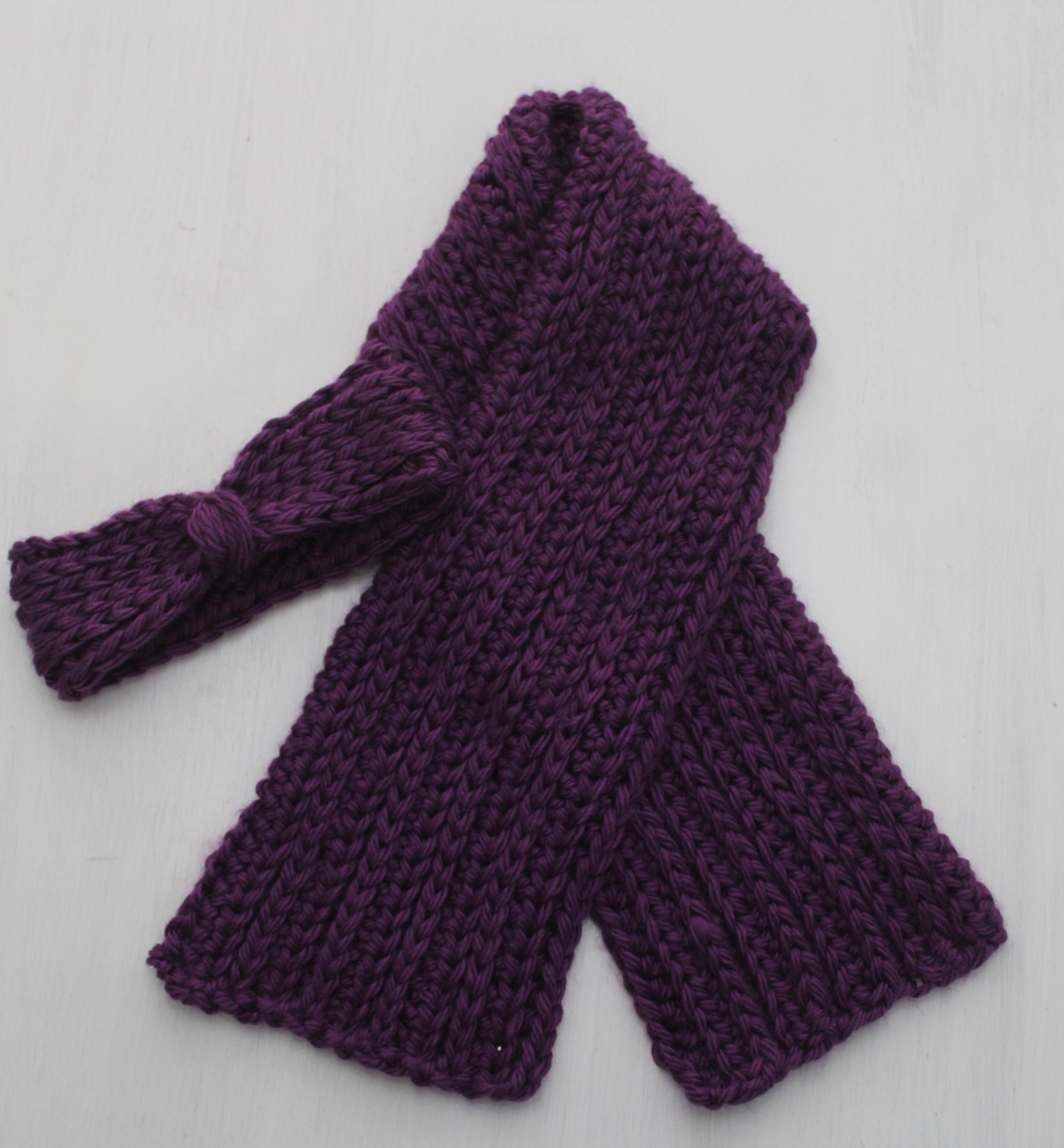
INSERTING INTO A CHAIN SPACE OR BETWEEN STITCHES
Another common variation is to insert the hook into a chain space or the space between stitches. Patterns will some times tell you to create a stitch in a ch-1 space, for example. In this case, you will insert your hook into the space created by chain(s) in the previous row, making the designated stitch in that open space. When placing the stitch between two stitches (even without a chain space) in the previous row, you can also alter the look of the fabric.
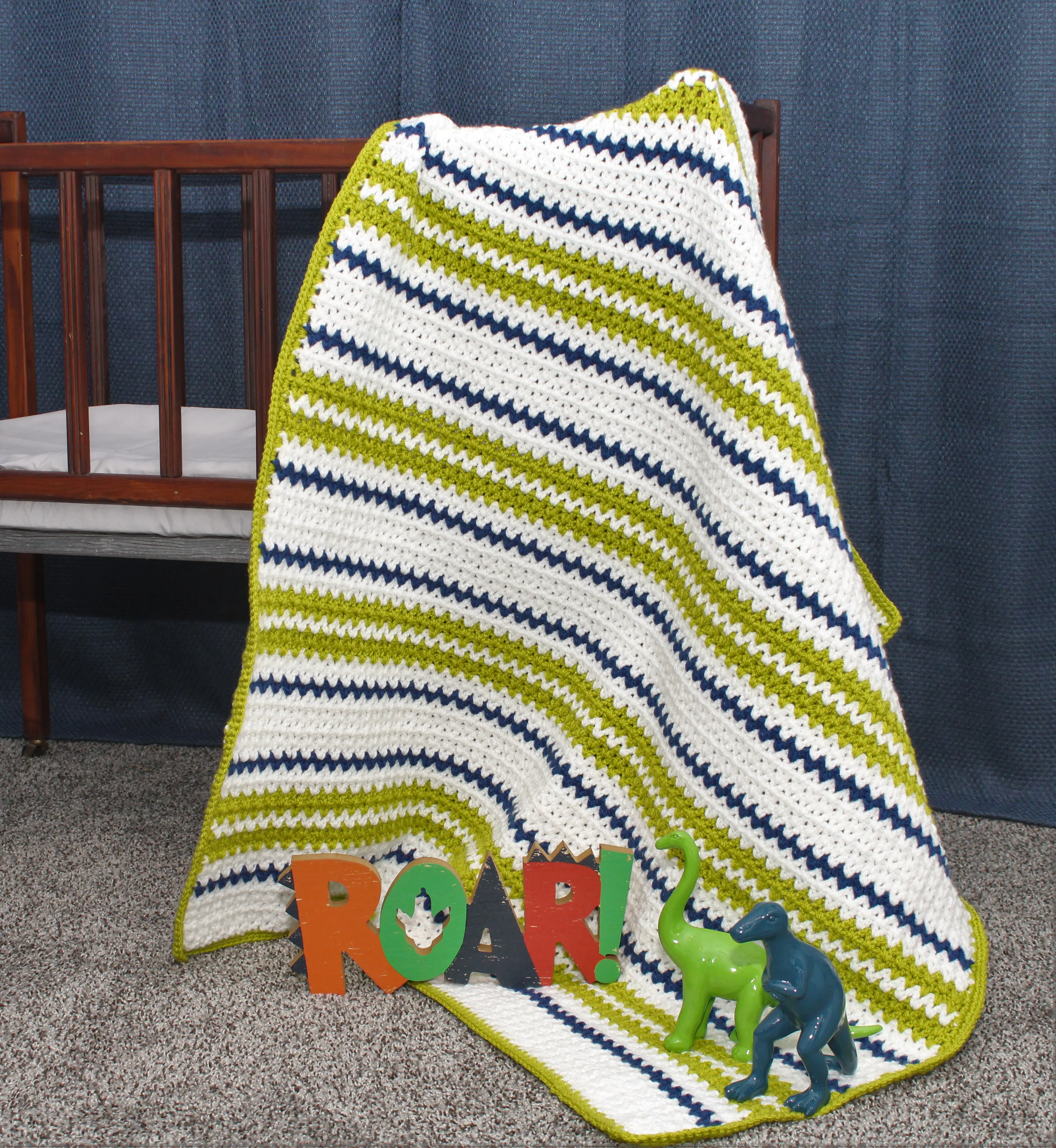
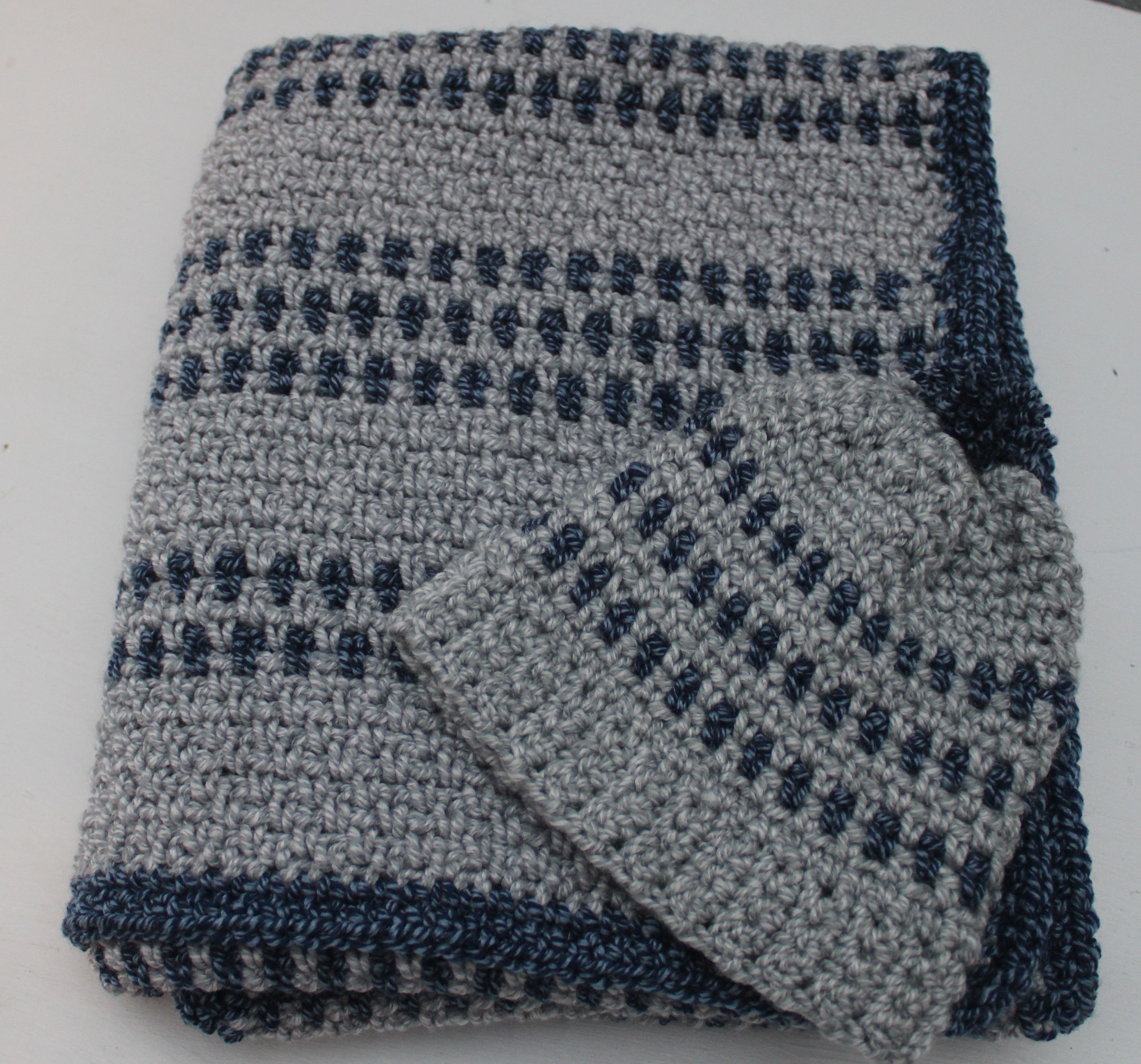
Dots of Denim Baby Afghan and Hat
SPIKE STITCHES
Other pattern variations have you insert the hook into a stitch that is located in one or more rows below the previous row. This technique creates the appearance of spikes, which creates stitches known as spike stitches. The insertion of the hook may be one or two stitches to the left or right of the stitch, or directly below. This variation requires you to lengthen the loop to the height of the working row. Then you will complete the stitch as normal.
RAISED STITCHES
Finally, the last variation of inserting the hook into a different location creates raised stitches (front post dc, back post dc). Inserting the hook around the stem or post of a stitch in the previous row creates raised stitches. These are made by working front to the back (front post), or from the back to the front (back post) around a post. This technique raises the stitches off the fabric, giving a unique texture to the final piece (see below) Alternating front post and back post stitches provide another variation to the raised stitches.

Stitch variations-working several stitches together
Working two or more stitches together at the top decreases the total number of stitches. This helps to shape one’s work. Clusters stitches are formed when this method is used (see below). The clusters give the fabric a thicker and studier appearance.
Joining groups of stitches together makes several decorative stitch formations. These include clusters, puffs, bobbles, and popcorns. These add beautiful features to crochet stitches. Adding popcorns, puffs, and bobbles into rows of basic stitches creates a new interesting texture (see below).
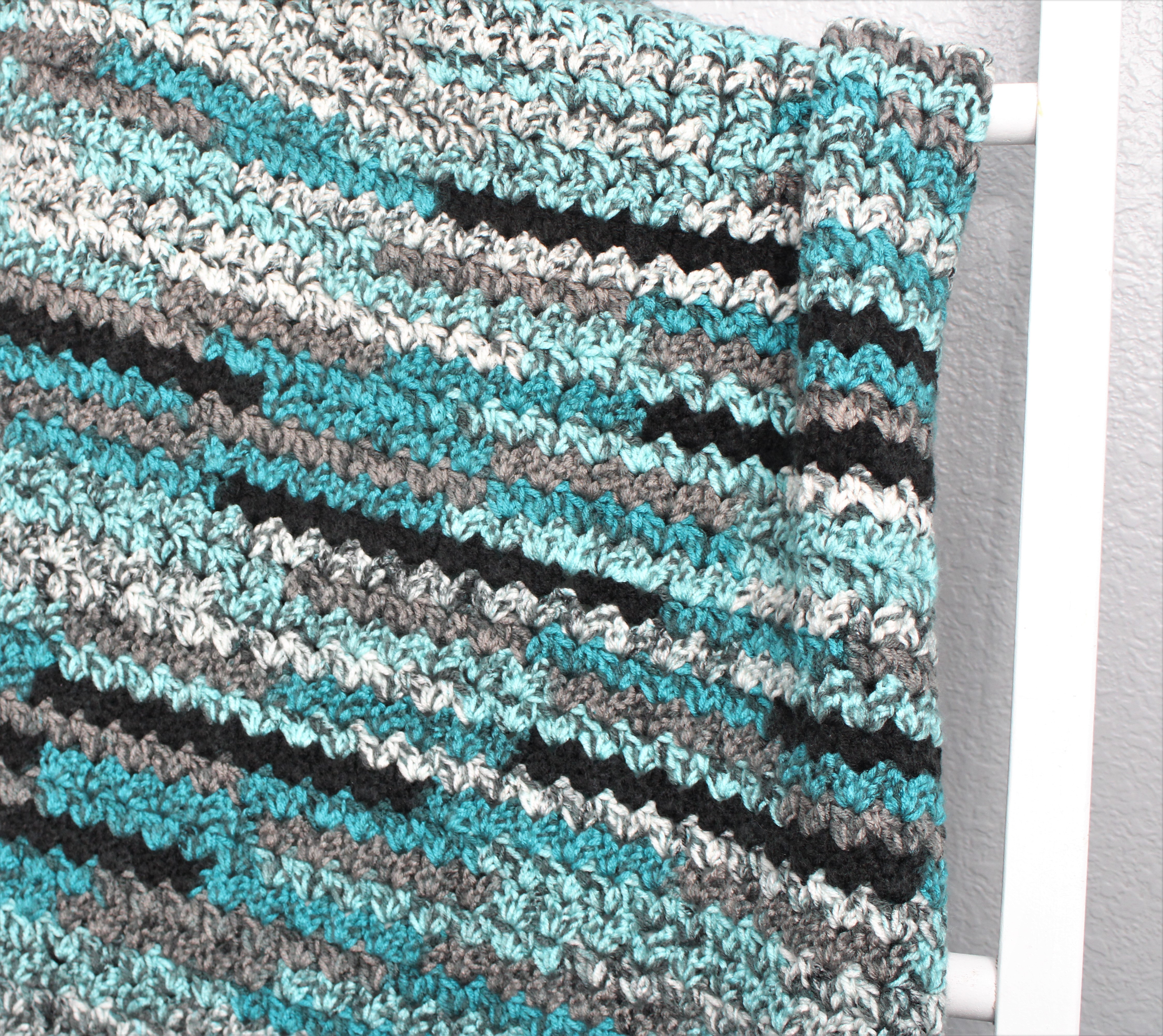
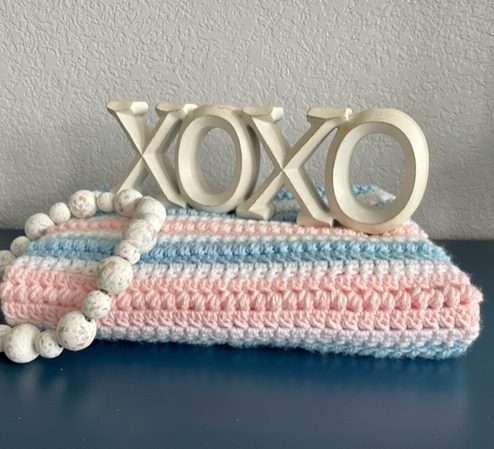
Stitch variations-Working several stitches IN THE SAME PLACE
When working several stitches in the same place you create unique stitches that resemble fans and shells. Using this technique increases the total number of stitches when shaping a garment or other items. Increasing may be worked at the edges of flat pieces or at any point along a row. Shells and fans create intriguing and eye catching designs throughout the fabric. It also is a great way to edge a piece for a more finished look. You can find examples of this technique below.
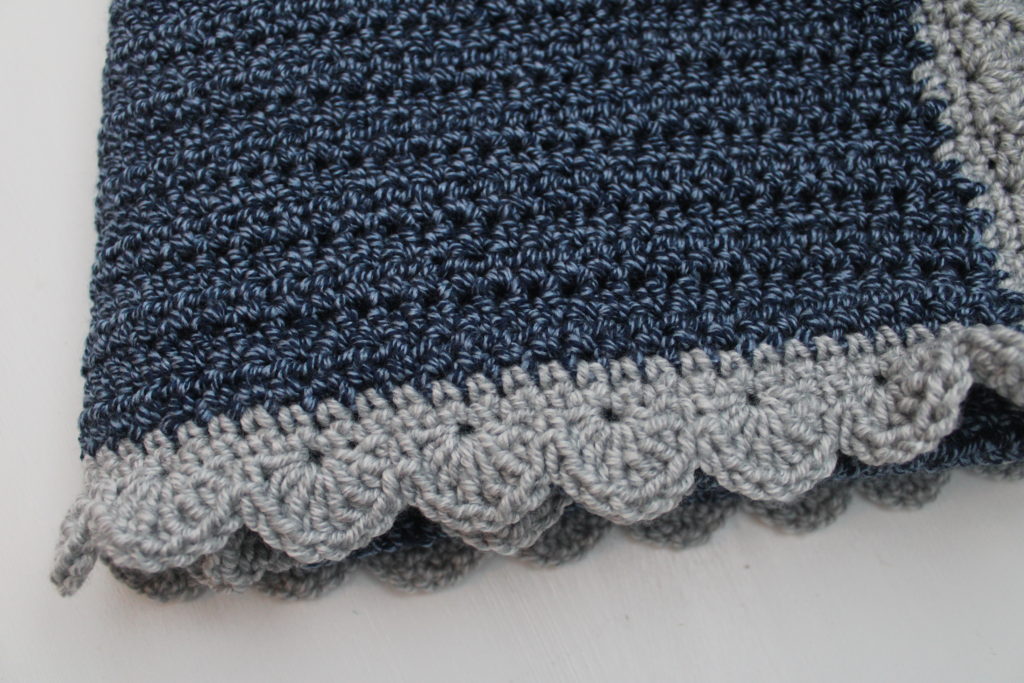
Denim and Lace Baby Afghan

Stitch variations-working stitches in the reverse direction
Working stitches in the reverse direction is the final variation. I have used this technique as the final round of the edging of a blanket. It takes a bit of practice, as it seems difficult to think of the mirror of the stitch. The effect, though, is amazing and unique!
Let your imagination take over
Crochet is a highly creative process. You can alter the appearance of the basic stitches and create really dazzling crochet designs. Changing how tall, wide, or textured a stitch is gives the fabric you create a unique design. Using some of these very simple techniques will open up countless possibilities for you to discover. Crochet stitch variations help you create a remarkable new look to your projects and achieve different effects. I encourage you to pick up that hook and begin designing!





